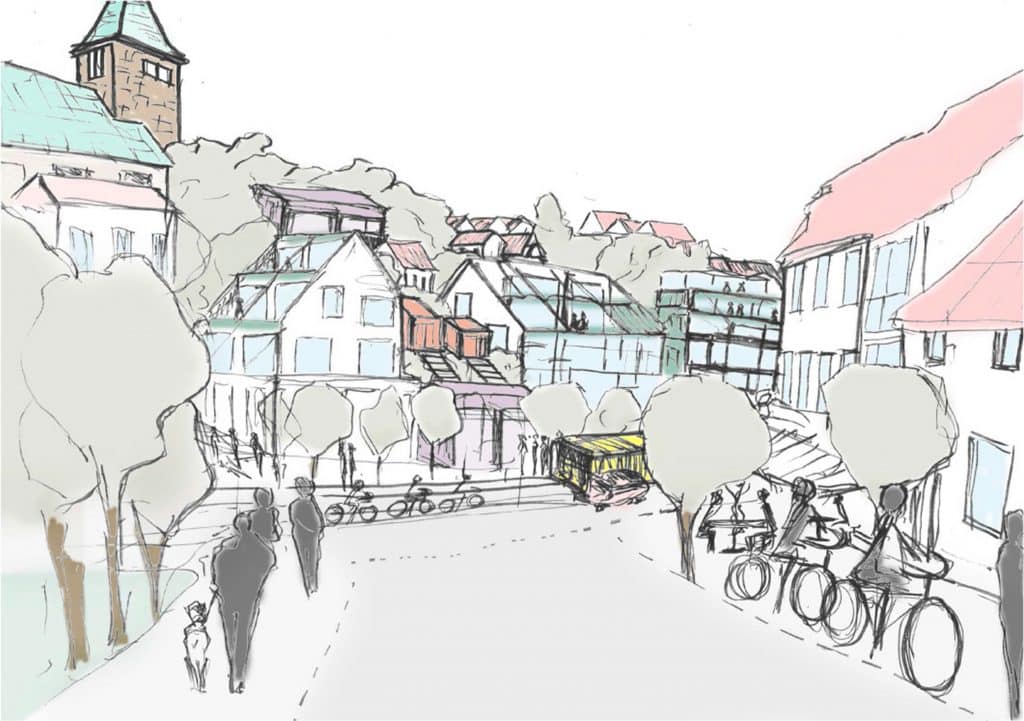Group N: Kaltental
Kaltental is since 1922 a district of Stuttgart that exemplifies many similar situations in Stuttgart: A former village that is today part of the city. It has lost many of the former functions (town hall, police, post office, shops, …) and has been extended to large residential areas. Today, Kaltental is more or less a typical suburban settlement or sleeping city. Like many other places in Stuttgart, Kaltental has also fallen victim to growing traffic: the former federal road cuts through the town and creates inhospitable spaces. Although traffic has declined since the passing of the tunnel, the road has largely retained its appearance. On the other hand, Kaltental still clearly shows that this was once an independent place with its own identity: located in a wooded area, Kaltental is still easy to read as an independent place. Two churches (one Protestant, one Catholic) determine the cityscape very strongly. A few shops and pubs give an idea of where the village center used to be. Occasionally there are still old courtyards between the residential buildings. Many green open spaces characterize the partly still noticeable village character.
The question is how we can strengthen the qualities of Kaltental and create space for upcoming new lifestyles, generational change and digitization.
Warming up Kaltental
In this project, the students envision a new era of sustainable mobility and Kaltental as the first Eco Village in Germany. The city is being developed by new bicycle lanes for e-bikes, shared autonomous cars and a subway with three stations. Solar powered charging stations are spread out over the hills, and a network of elevators makes it easier for older people to pass through the city. The old main road, which runs through the entire center, turns into a meeting place for the residents. On the terraced houses in Kaltental grow “hanging gardens”, which are known for their regional products and retreats not only for the people living there. The changes of the area make the community grow together and people look after each other, sharing space, time and knowledge.

| Students: | |
| Julian Lipp | UNI Stuttgart |
| Candelaria Gassiebayle | UBA FADU, Buenos Aires |
| Miguel Andrés Cid Muñoz | UTFSM, Valparaiso |
| Nickson Tawakali | Mzuzu University |
| Kim Garten | HfT Stuttgart |
| Teachers: | |
| Prof. Philipp Dechow | University of Applied Sciences Stuttgart – Faculty of Architecture and Design / Faculty of Urban Planning |
